這本小冊子 100*150mm (4*6英吋),是在 名古屋 候機時,順手買回來的。
資料相當豐富。
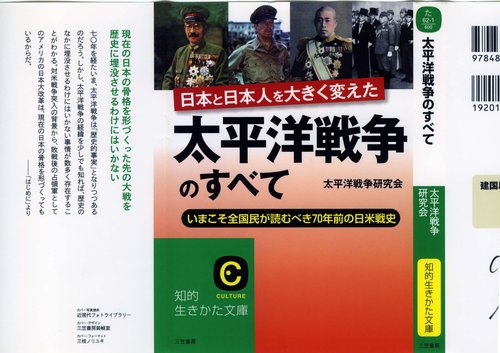
日本卑鄙小人 偷襲 珍珠港,在後院放一把火,老美也就傾全力報仇了。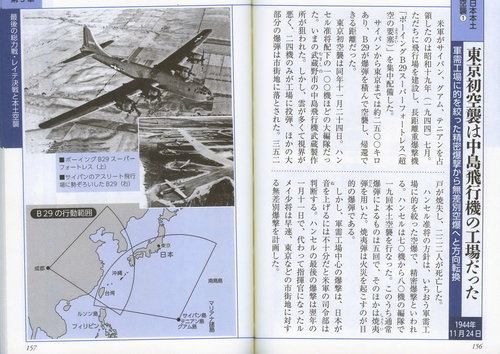

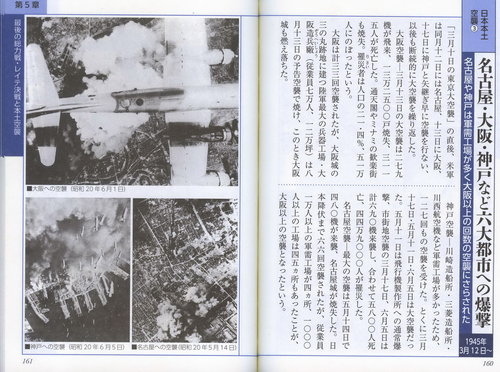
老美說:除了 奈良、京都 給我留著,老子想看就看之外,都一律給我轟平炸光。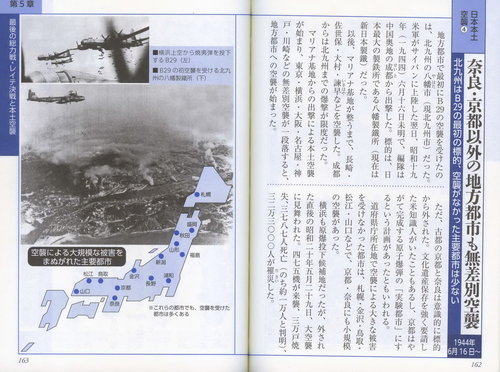
連不在本土的台灣島民 也遭殃了
最厲害的是這種 分裂散佈方式的 凝膠汽油 燒夷彈,火一發,不可收拾。
多少平民百姓、受盡痛苦,然後慘死。
台灣死多少人,不在這張"本土"名單裡。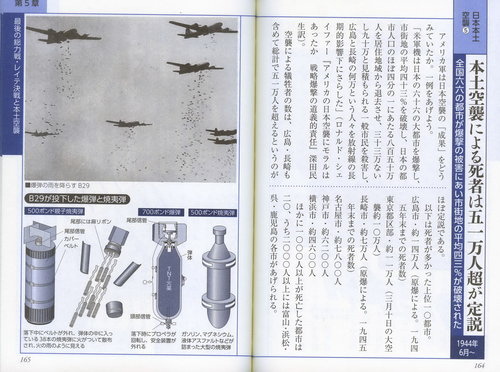
Frank 轉來下面貼的 "B-17 in 1943" 的傳奇故事。
看到美國飛行官身後的大鳥,機尾裂開,趴在地上,嚇了一跳。
只要著上 橄欖綠色 ,就還原了我67年前碰過的那一隻掉在蕃薯田的”美國盟機”了。
”盟機”是套用一些自己神經錯亂,也要我跟著錯念教科書,或新聞稿裡講的名稱。
正確的叫法是”美國敵機,當時我還是 高村家 日本皇民的一員。
1945年4-5月,台南的鹽水鎮,幾乎已經被燒夷彈”夷”為平地了。
我家住在關帝廟對面的日本宿舍。那位年輕的岡村先生,剛從琉球逃難過來,沒幾天就在對面的宿舍燒死了。
有一天傳說美國飛機被高射砲打下來了。
我們小學二年級的女導師帶領我們10幾位小朋友,走到北邊的蕃薯園,看一架橄欖色的飛機,小孩子的眼中,機艙像是樓房一樣高。
機身裂開一條大縫,拖出來一條機槍的子彈帶,上頭還有手指環一樣,穿著一排子彈。
蕃薯田地上犁出來一片光禿禿的黃土,摻雜幾塊殷紅的血跡。
先父當時是鹽水公所的 街”助役”,日本街長的助理。
曾聽到 街長看到飛機的油漆這麼講究,機體這麼龐大,喃喃自語說:阿,輸定了。
有幾位活下來的飛行員,矇上眼睛,被押送到軍部。
其餘幾位草草掩埋。終戰之後,聽說美國人要來調查,公所趕緊修造墳墓。
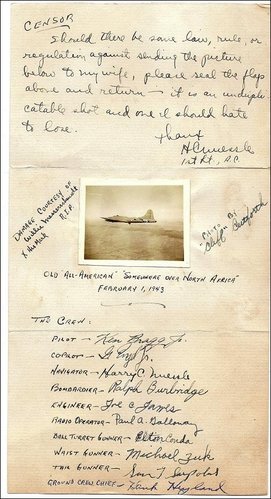
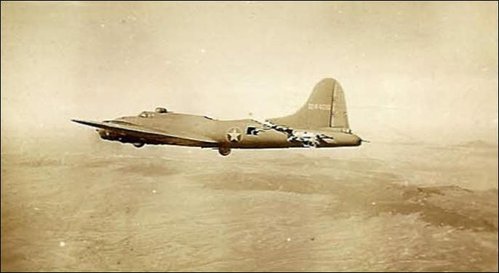
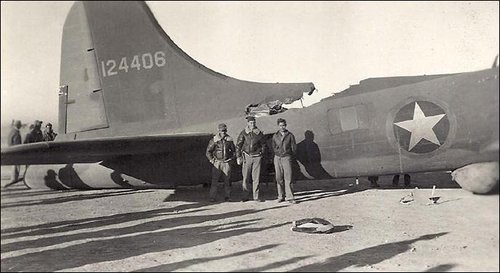
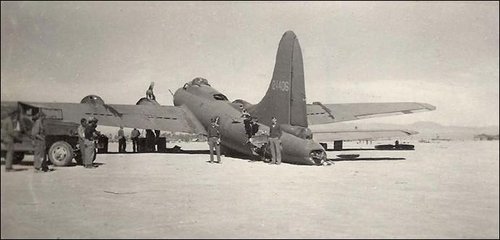
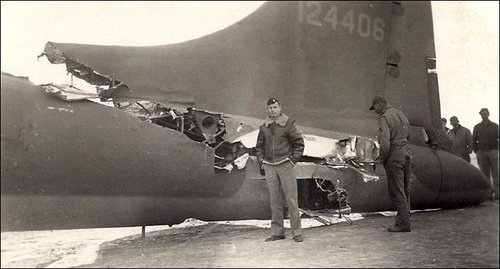
B-17 in 1943
A mid-air collision on February 1, 1943, between a B-17 and a German fighter over the Tunis dock area, became the subject of one of the most famous photographs of World War II. An enemy fighter attacking a 97th Bomb Group formation went out of control, probably with a wounded pilot then continued its crashing descent into the rear of the fuselage of a Fortress named All American, piloted by Lt. Kendrick R. Bragg, of the 414th Bomb Squadron. When it struck, the fighter broke apart, but left some pieces in the B-17. The left horizontal stabilizer of the Fortress and left elevator were completely torn away. The two right engines were out and one on the left had a serious oil pump leak. The vertical fin and the rudder had been damaged, the fuselage had been cut almost completely through connected only at two small parts of the frame and the radios, electrical and oxygen systems were damaged. There was also a hole in the top that was over 16 feet long and 4
feet wide at its widest and the split in the fuselage went all the way to the top gunners turret.
Although the tail actually bounced and swayed in the wind and twisted when the plane turned and all the control cables were severed, except one single elevator cable still worked, and the aircraft still flew - miraculously! The tail gunner was trapped because there was no floor connecting the tail to the rest of the plane. The waist and tail gunners used parts of the German fighter and their own parachute harnesses in an attempt to keep the tail from ripping off and the two sides of the fuselage from splitting apart. While the crew was trying to keep the bomber from coming apart, the pilot continued on his bomb run and released his bombs over the target.
When the bomb bay doors were opened, the wind turbulence was so great that it blew one of the waist gunners into the broken tail section. It took several minutes and four crew members to pass him ropes from parachutes and haul him back into the forward part of the plane. When they tried to do the same for the tail gunner, the tail began flapping so hard that it began to break off. The weight of the gunner was adding some stability to the tail section, so he went back to his position.
The turn back toward England had to be very slow to keep the tail from twisting off. They actually covered almost 70 miles to make the turn home. The bomber was so badly damaged that it was losing altitude and speed and was soon alone in the sky. For a brief time, two more Me-109 German fighters attacked the All American. Despite the extensive damage, all of the machine gunners were able to respond to these attacks and soon drove off the fighters. The two waist gunners stood up with their heads sticking out through the hole in the top of the fuselage to aim and fire their machine guns. The tail gunner had to shoot in short bursts because the recoil was actually causing the plane to turn.
Allied P-51 fighters intercepted the All American as it crossed over the Channel and took one of the pictures shown. They also radioed to the base describing that the empennage was waving like a fish tail and that the plane would not make it and to send out boats to rescue the crew when they bailed out. The fighters stayed with the Fortress taking hand signals from Lt. Bragg and relaying them to the base. Lt. Bragg signaled that 5 parachutes and the spare had been "used" so five of the crew could not bail out. He made the decision that if they could not bail out safely, then he would stay with the plane and land it.
Two and a half hours after being hit, the aircraft made its final turn to line up with the runway while it was still over 40 miles away. It descended into an emergency landing and a normal roll-out on its landing gear.
When the ambulance pulled alongside, it was waved off because not a single member of the crew had been injured. No one could believe that the aircraft could still fly in such a condition. The Fortress sat placidly until the crew all exited through the door in the fuselage and the tail gunner had climbed down a ladder, at which time the entire rear section of the aircraft collapsed onto the ground. The rugged old bird had done its job.
沒有留言:
張貼留言